In this famous art lesson for children we will learn about the art of Clementine Hunter and take inspiration from her work to create our own day-in-the-life art project.
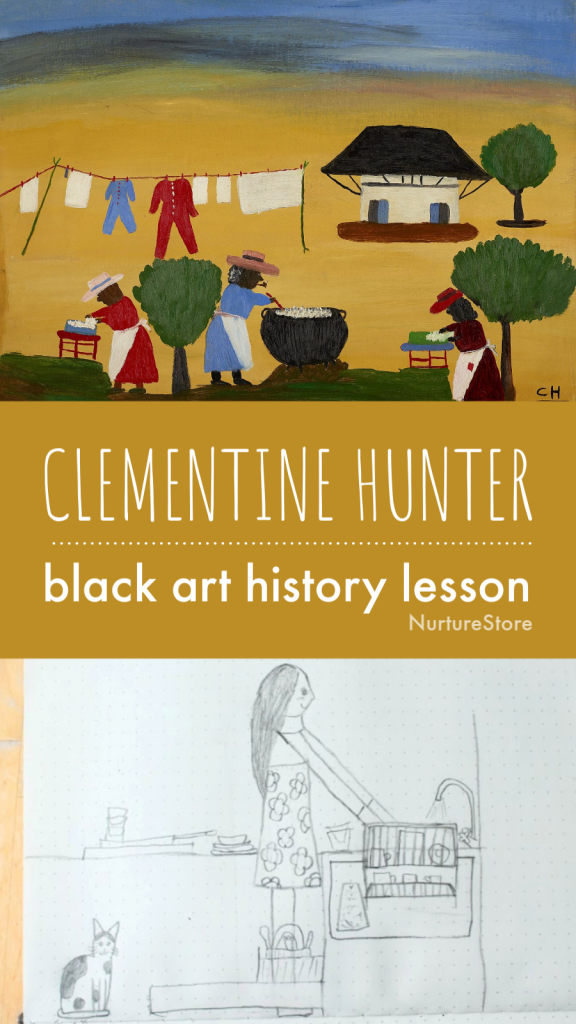
Clementine Hunter black art history lesson for children
In this lesson children can:
:: learn about the artist Clementine Hunter
:: learn about an aspect of black history in the United States of America
:: think about why we make art and what makes an interesting work
:: compare the work of Clementine Hunter with the UK artist L.S. Lowry
:: compare and contrast their own life with the lives depicted in the work of Hunter and Lowry
:: develop their own observational, day-in-the-life drawings, sharing aspects of their life
:: develop sketching skills
Materials needed
:: sketch book or paper
:: sketching pencil or pen
:: (phone)camera – optional
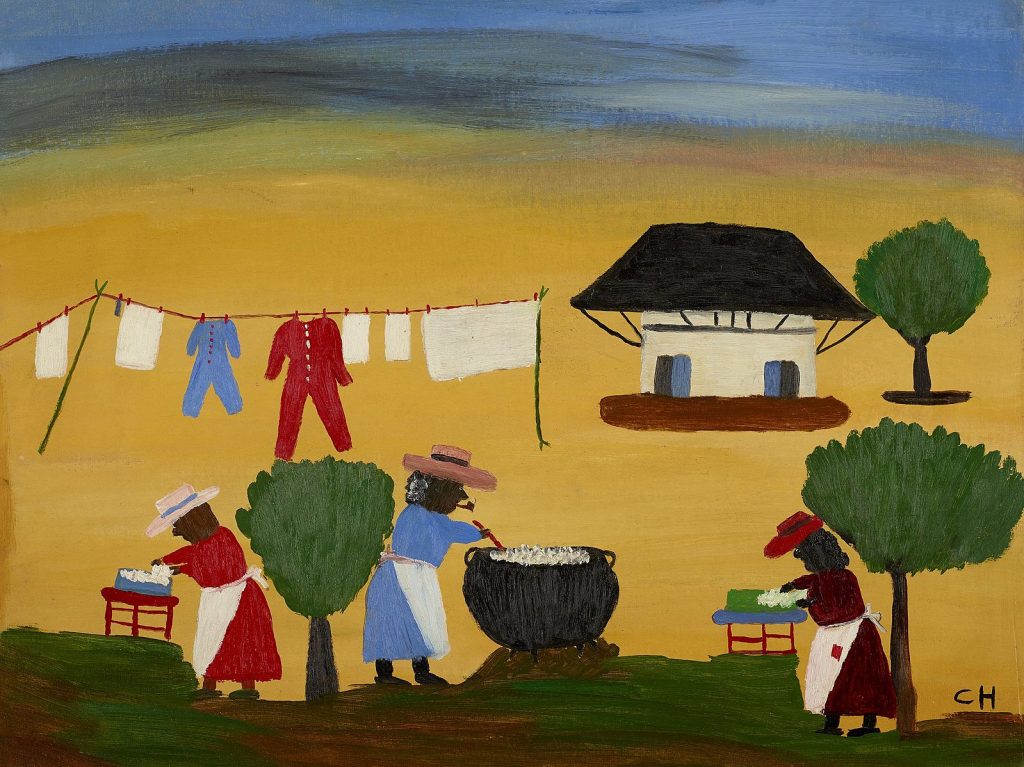
FAMOUS ART IN FOCUS :: CLEMENTINE HUNTER
Clementine Hunter was born in late 1886 or early 1887 and lived until she was over 100 years old. She lived on the Melrose Plantation in Louisiana in the United States.
Hunter worked as a farm labourer in her early life. She never learned how to read or write, and never had any art lessons.
Later, when she was around 50 years old, she began painting, inspired by the art materials she found left by an artist who visited the plantation. Hunter painted in the evenings, after working during the day in the plantation house. She use whatever materials she could find including canvas, wood, gourds, wine bottles, and plastic milk jugs.
Hunter’s paintings use bright colours and show the everyday life of the black community, living and working on the plantation. They are a celebration of the lives of everyone in the community.
Take a look at these examples of her work and talk about what you can see:
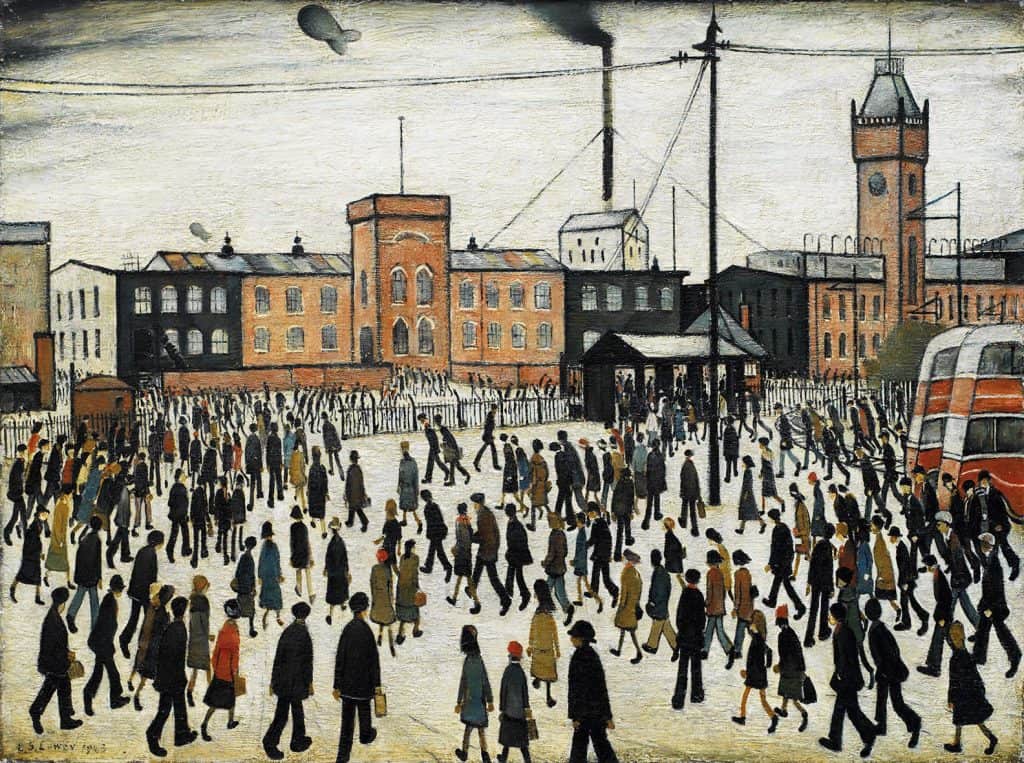
Comparing Hunter and Lowry
Compare Clementine Hunter’s paintings with the work of L.S. Lowry.
Lowry was born in 1887 in England. He attended the Manchester School of Art and is famous for his depictions of ordinary working people in Pendlebury and Salford in the north of England.
Take a look at these paintings by Lowry and consider how they are similar to Hunter’s pictures.
:: What do the two artists show in their pictures?
:: What colours do they use?
:: How are their pictures similar?
:: How are they different?
Discussion: what is art for?
When we visit an art gallery or see famous art, the pictures often show grand scenes, kings and queens, and pictures of wealthy people.
Both Hunter and Lowry painted ‘ordinary’ people, going about their everyday lives.
Which type of art is most interesting to you? Which do you prefer to look at?
What do you think makes an interesting picture?
Do you think it is important to show everyday life in art? Why?
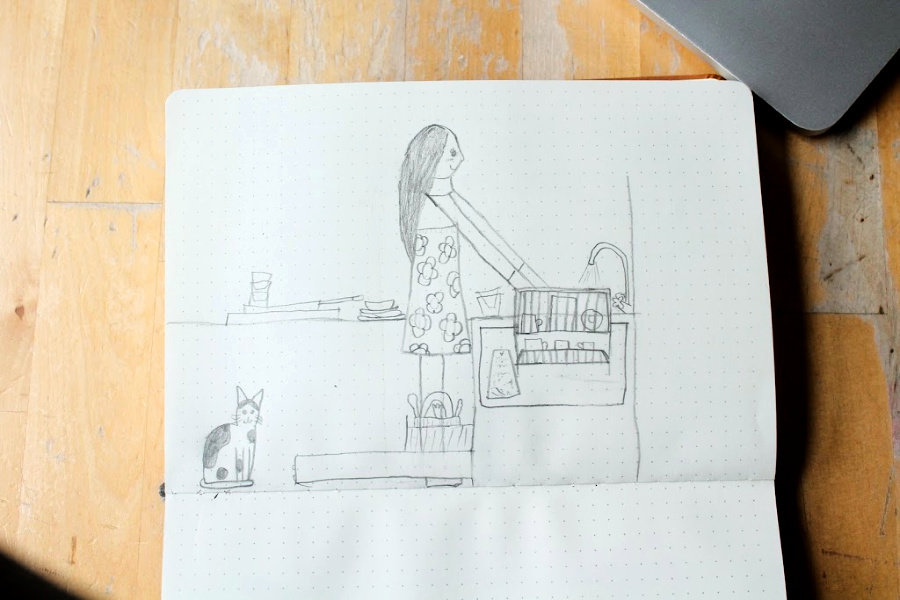
A Day in the Life sketching project
Let’s take inspiration from Clementine Hunter and draw pictures that depict our everyday lives.
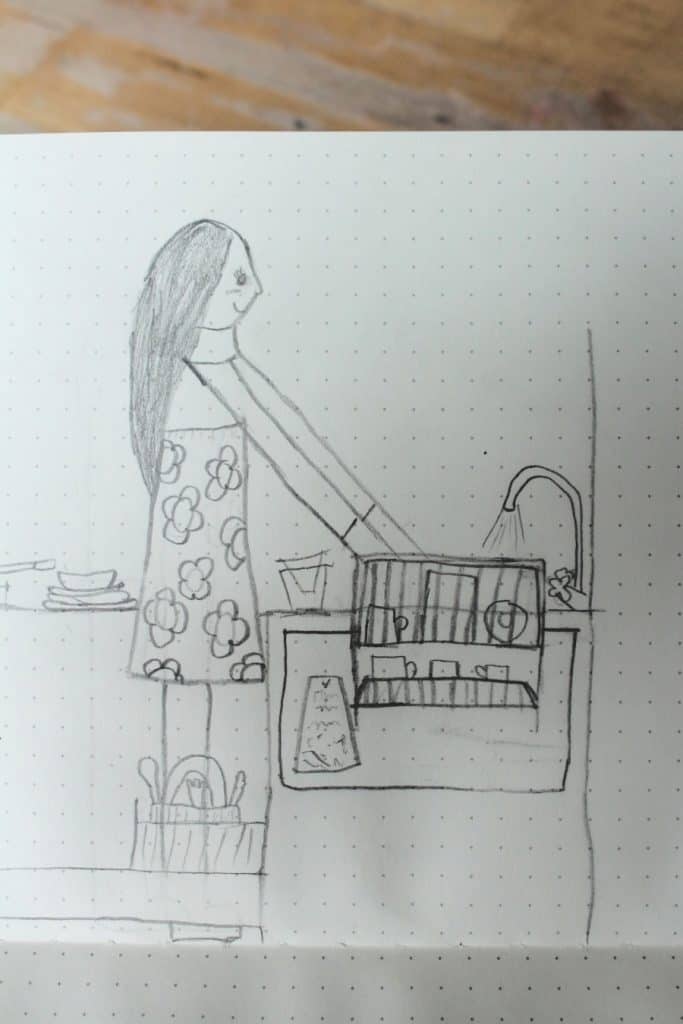
Begin by thinking about what an average day is like for you. What do you usually do?
You’re most likely not picking cotton and washing clothes in the way the plantation community did, but you will be preparing food and doing chores at home.
To capture a ‘Day in the Life’ of your family and community, what scenes should you include? What tasks, places, and events are important to your community?
As you go through your day you might like to take photographs of some of the regular events that make up your life.
You can also use a sketch book to quickly capture scenes from you day: maybe you will sketch your brother feeding the cat, your dad loading the dishwasher, your neighbour walking their dog, and your neighbourhood at the grocery store. These sketches can be quick and simple, as a way to gather ideas.
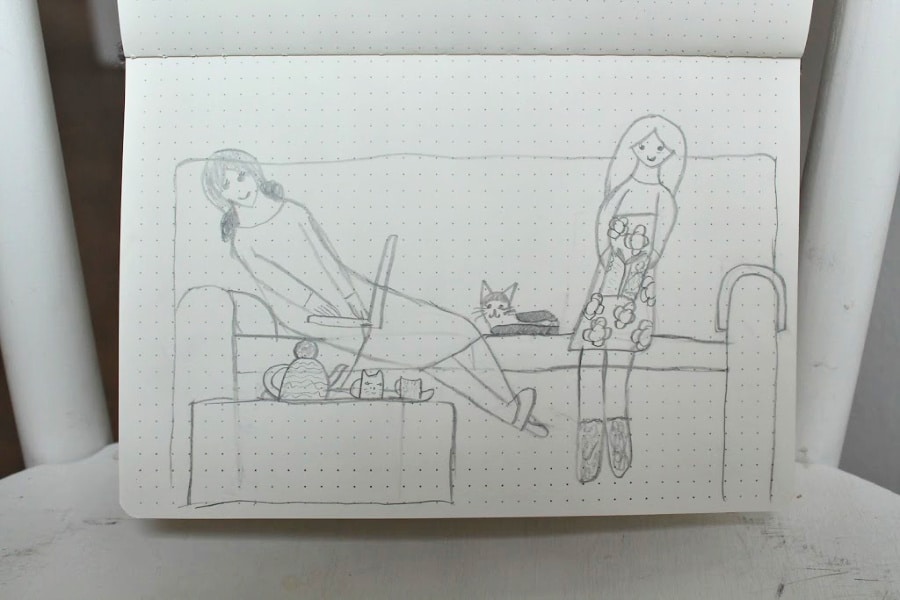
Then choose a few scenes that you think capture the essence of a day in your life.
Maybe you will pick the things that happen the most often, or the events you like the best.
Perhaps something very special happens that you want to remember.
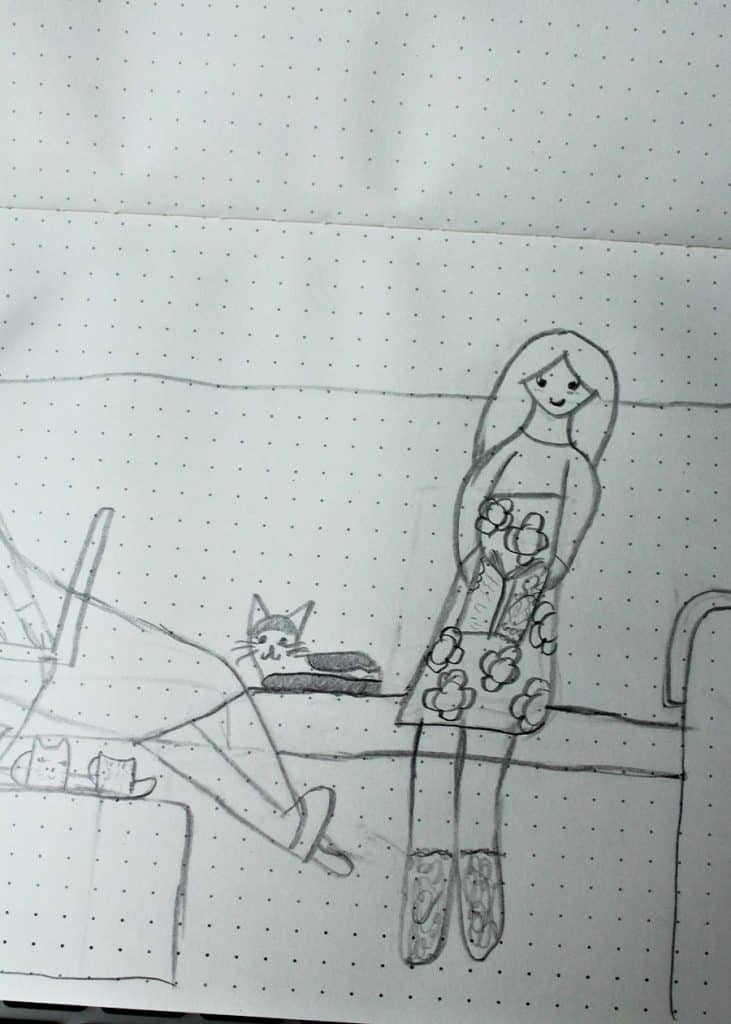
Use your sketchbook or a piece of paper to draw a few of your key ‘day in the life’ events.
Try to include as many little details as you can: what your pet looks like, your favourite mug, your mum’s slippers, what kind of plates you have in your kitchen.
Be sure to add the date to your drawings and keep them for a future generation to enjoy, so they can learn about what life was like in your community in at this time in history.
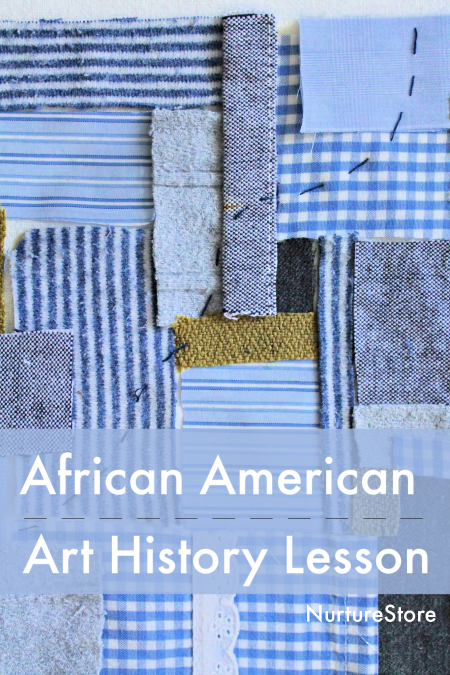
More artists of colour art history for children
The quilters of Gee’s Bend are inspiring, contemporary artists to include in your art curriculum.
Learn about African artist Esther Mahlangu and Ndebele culture, and create your own Esther Mahlangu-inspired art.
You can find more resources for teaching about Black History Month here.
You can find more resources for teaching art lessons based on famous artists here.
You can see our full index of children’s art activities here.

